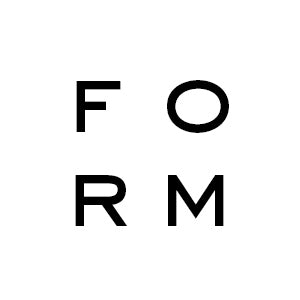Frank Penders

Frank Penders combines his experience as a photographer, metal worker and civil engineer. A strong combination of aesthetic, conceptual, hands-on and technical qualities that he uses to design to the purest shapes. His practice stretches from steel stairs to small objects. He exhibited his three pieces from the ONE series at Dutch Design Week in 2022 and will be exhibiting with Form Editions at Collectible 2023 – here Frank discusses more about the series and his inspiration behind it.
What ideas or themes are you exploring in the ‘ONE’ series?
The ONE series originated from my fascination for traditional forging. The deformation of steel that is red hot. I wanted to combine this with my way of designing. Slender lines, clean and well-lined surfaces. In addition, I had a strong need to make the simplest thing possible. Something so simple that it should have been around a long time ago. A design that explains itself but does not explicate. A design in which you see how the shapes originated, but the new shapes keep challenging you to look at it further.

Where did the idea of using just one piece of a material to create a 3-dimensional sculpture come from?
I wanted to work with fewer parts. It reinforces the simplicity and gives the object a strong character. The steel version of monolithic.
What was the making process like - how did you approach creating each of the three pieces?
When I make a design I look for a certain character. A character that emerges out of the composition of forms. Shapes that have relationships with each other. One form arises from the other. This literally happens when making. One shape twisted from the other, the cut is actually stretched. A 3-dimensional residual space is created in which the shapes remain related to each other. A form of communication. Earthy in the sense of tectonic plates sliding but staying connected. Landscape shaped by greater forces.
Where did the idea of using just one piece of a material to create a 3-dimensional sculpture come from?
I wanted to work with fewer parts. It reinforces the simplicity and gives the object a strong character. The steel version of monolithic.

What was the making process like - how did you approach creating each of the three pieces?
When I make a design I look for a certain character. A character that emerges out of the composition of forms. Shapes that have relationships with each other. One form arises from the other. This literally happens when making. One shape twisted from the other, the cut is actually stretched. A 3-dimensional residual space is created in which the shapes remain related to each other. A form of communication. Earthy in the sense of tectonic plates sliding but staying connected. Landscape shaped by greater forces.
Why did you choose steel as your main material to work with?
I can go on and on about this. There is so much beauty about steel. You can play with slender lines and full surfaces to design with. This allows you to create lively compositions that change from an open to a closed character depending on your perspective. Steel is stubborn and sometimes really a struggle to work with. You can bend it, but you can also saw it and weld it back together. In both cases it still looks like 1 piece of steel. When you heat steel, it deforms again in a different way.
When you touch steel you feel how it takes over your warmth. It conducts. You can say that it feels cold, but I experience that my warmth, my energy, is absorbed by the steel. A transfer. Steel continues to inspire me to work with it.
Each piece from the series has different shape and finishes - what was important for you to consider when deciding these?
It is important to me that you continue to experience the steel. It should not disappear under a layer of paint because it has so much character. By patinating it, you let the steel react to various chemicals. Those are real reactions. That is the steel showing itself. It is the nature of the material. In essence, steel wants to return to its earthy ore form. With the patination you provoke that will of the steel. By making that presentable, the object is strengthened. It not only speaks in its form but also shows its character.

How do you see your practice developing in the near future?
I still have a lot of shapes floating around in my mind that I want to make. The ONE series will continue to grow and I can see myself continuing this way of creating for years to come. In addition, I continue to design unique stairs. For the long term I increasingly feel the need to let go of the function. A slow development because that function is also a kind of anchor in your design and that works very well. What remains without function? What context does the form take? For me that is the transition from design to art. I think that the communicating forms are a good start to explore this further.
Frank's pieces in our collection
- Tags: Artist feature



